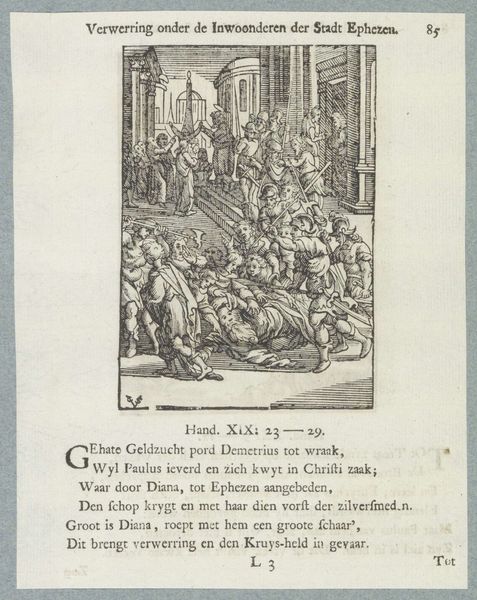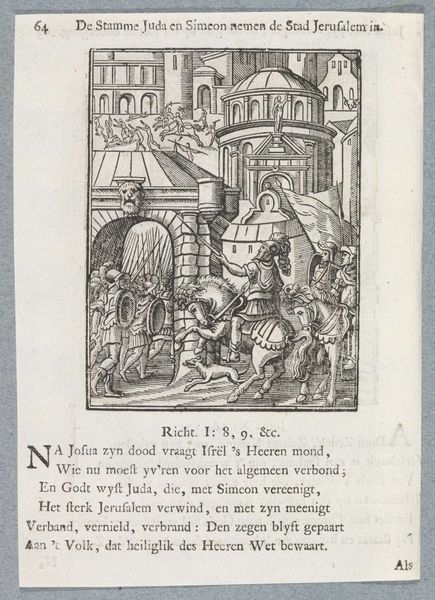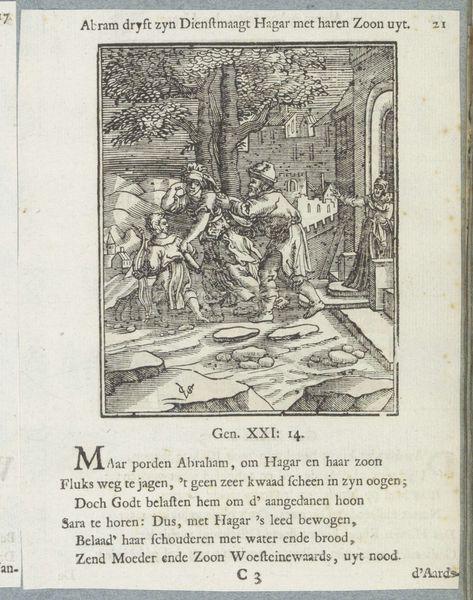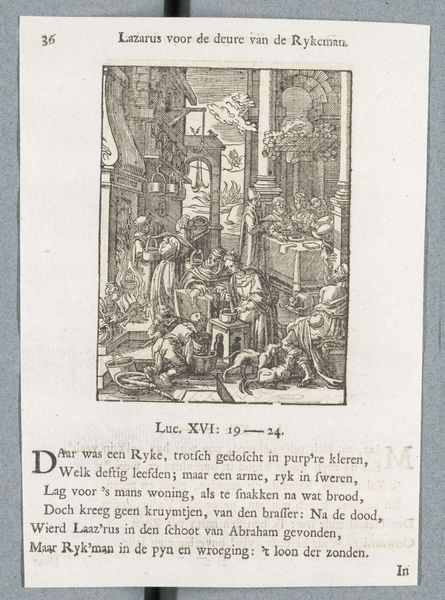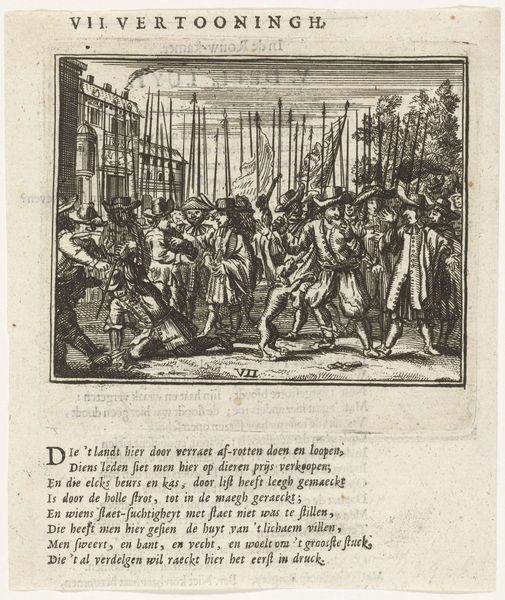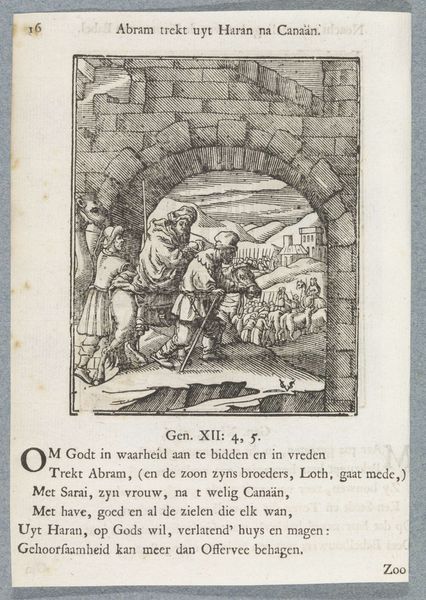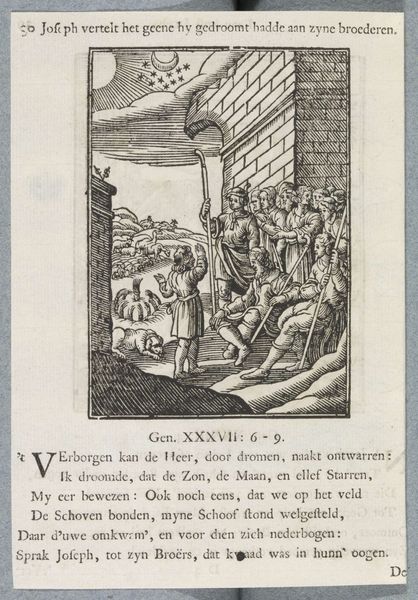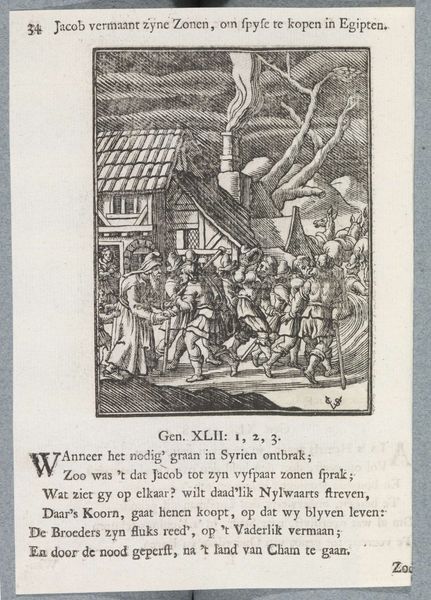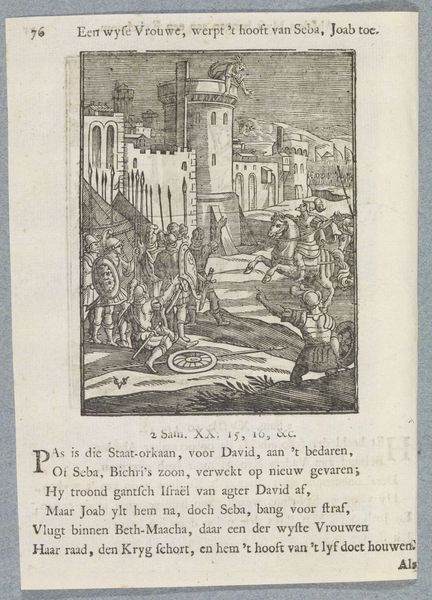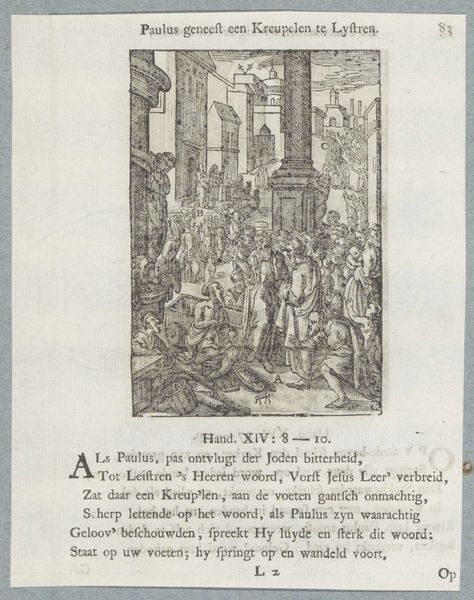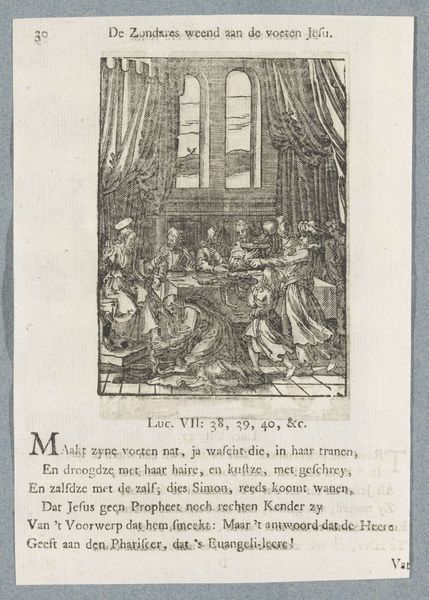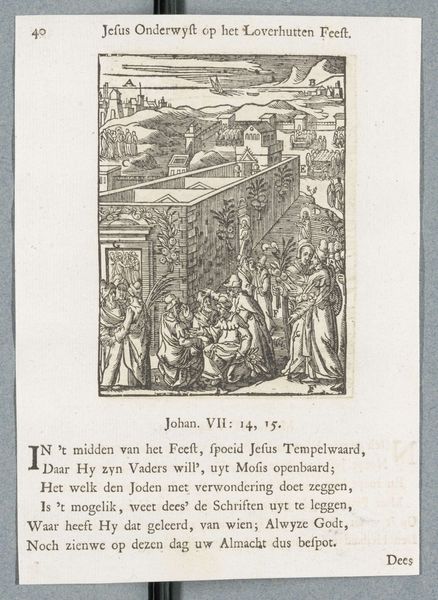
print, engraving
#
baroque
# print
#
landscape
#
figuration
#
history-painting
#
engraving
Dimensions: height 109 mm, width 80 mm, height 169 mm, width 133 mm
Copyright: Rijks Museum: Open Domain
Curator: The work before us, titled "Elisa’s Performance in the War Against Aram," is attributed to Christoffel van Sichem II and dates from 1645 to 1740. It’s an engraving, so a print. It is now housed here at the Rijksmuseum. Editor: My first impression is the sharp contrast, that crisp, stark quality lends the image a feeling of heightened drama. The figures are densely packed, almost claustrophobic, conveying tension and unease. Curator: The print depicts a scene from the Old Testament, specifically 2 Kings 6. It represents Elisha, a prophet, and his interaction with the army of Aram. You see Elisha causing the Aramean army to be struck blind, an intervention intended to protect the kingdom of Israel. Consider that, as a print, its wide distribution helped propagate specific moral and political narratives during a time of great religious and political upheaval in Europe. Editor: Yes, there's definitely a power dynamic visualized through the symbols employed. The figures of the Aramean soldiers, shields lowered and disoriented, embody vulnerability and powerlessness. Elisa is portrayed rather passively almost aloof but his gesture, perhaps towards heaven, becomes the linchpin of the image, the locus of divine power that defeats an earthly army. Curator: And notice how the architectural background - presumably Samaria - seems almost idealized. Van Sichem cleverly employs spatial composition to distinguish between divine intervention and human conflict. Consider its broader significance in relation to religious wars. Prints like these bolstered faith and legitimized political power by illustrating divine protection afforded to those who followed religious guidance. Editor: Absolutely. It really calls to attention how the visualization of biblical events could have acted as a propaganda tool. There’s a fascinating tension too, in the engraving; a seemingly modest visual means deployed for quite assertive ends! Curator: Looking at this work contextualized as an instance of early propaganda changes one's understanding; It provides a lens into religious conflict and the strategic role art played at that point in history. Editor: Indeed, recognizing the specific, layered symbolism unlocks more than just its obvious religious theme— revealing a story of power, control, and deeply entrenched belief systems.
Comments
No comments
Be the first to comment and join the conversation on the ultimate creative platform.
